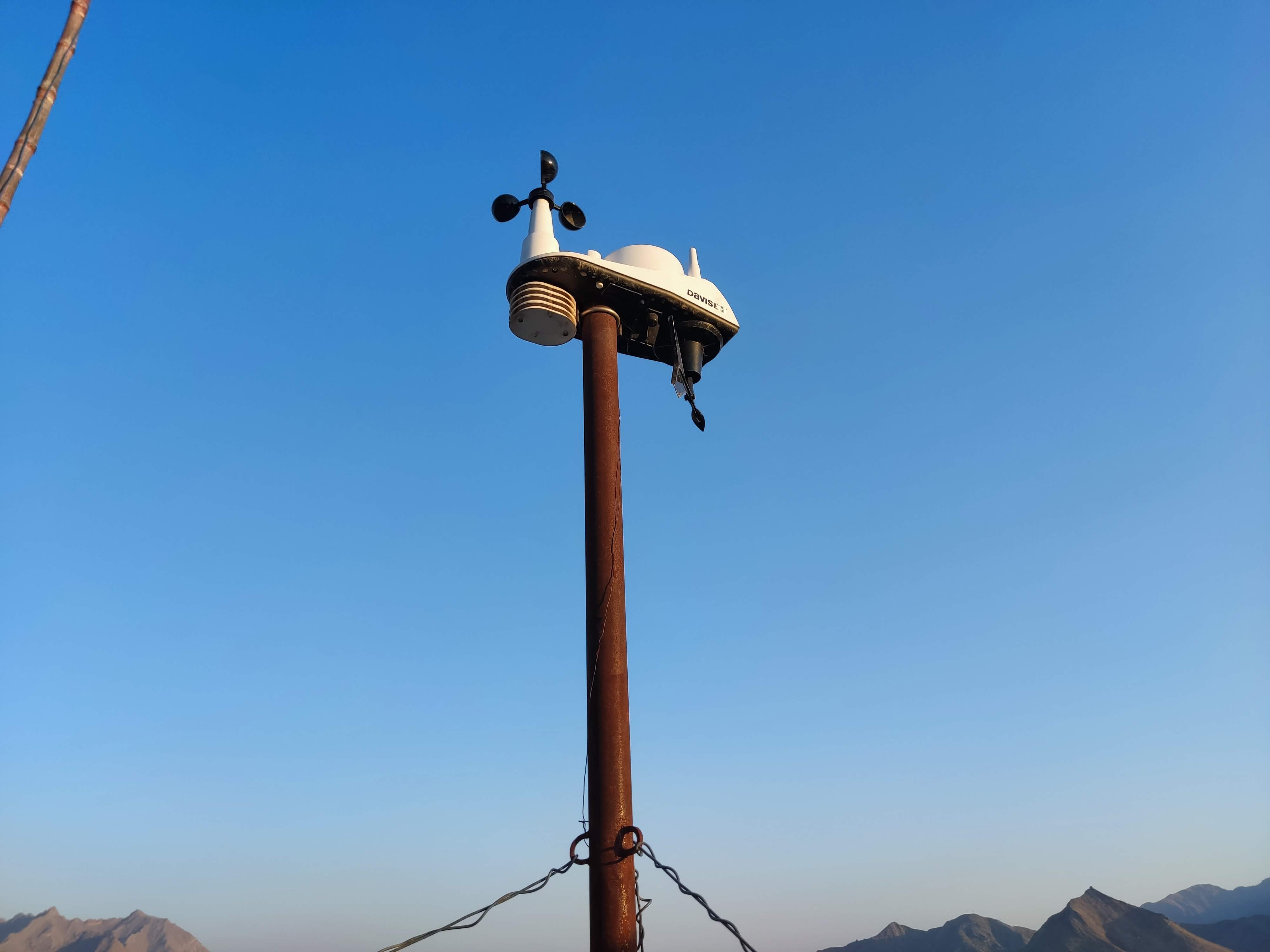
While climate change has undoubtedly altered weather patterns, efforts to address its challenges are also underway. Among those contributing to such efforts is Adnan Mohmand, a social worker from Halimzai tehsil in the tribal district of Mohmand.
Taking the initiative on his own, Adnan has installed a weather-monitoring device in his area, which is now helping local farmers stay informed about weather conditions.
“Mohmand is an underdeveloped district where developmental projects are scarce, and access to information is limited,” he explained. “There was no system in place to keep farmers informed about weather conditions, which gave me the idea to set up a climate monitoring station that could provide timely data to our farmers. In 2022, I installed this device using my own funds. It collects data on seven parameters related to weather and shares it at specific intervals.”
Adnan explained that the device can detect rainfall, wind, humidity, storms, hail, and wind speed with considerable accuracy. “It shares this information with various mobile applications. Every three seconds, it collects data through sensors and uploads it to the internet, where it's shared with all relevant weather-related apps.”
He added that the device has a range of 15 kilometers and is proving valuable in weather forecasting. “With climate change causing serious issues, there’s no comprehensive weather monitoring system in tribal districts.
Also Read: KP Budget Likely After Eidul Azha, No New Mega Projects Expected
This device has become a vital tool for our area. It’s not just helping farmers, students also use its data for research purposes. Since the installation in 2022, all data regarding rainfall, hail, humidity, and wind speed has been stored. Unfortunately, our province only has four or five such devices, and in the entire tribal belt, this is the only one — the one I installed.”
Noor Rehman, who has been farming for 35 years and grows vegetables like tomatoes, onions, cucumbers, chilies, okra, and coriander, as well as wheat, explained how climate patterns have changed over time. “From 1990 to 2010, weather conditions were predictable. Rainfall was timely, and the water table was stable. But since then, there have been drastic changes: erratic and reduced rainfall, prolonged droughts, torrential storms, and hail.”
He shared that this year, heavy hailstorms and wind damaged his cucumber crop, causing losses of around 500,000 to 600,000 rupees per farmer. His brothers also suffered significant losses to their tomato crops over five acres. “This is a rain-fed area, and only a few people have installed solar tube wells. So, farmers here rely heavily on rainfall. In earlier times, groundwater was at about 70 feet, but due to declining rainfall, it has dropped to 90 feet.”
According to Noor Rehman, the device installed by Adnan Mohmand has become quite beneficial. “Adnan regularly shares weather updates on Facebook, when it will rain, how intense it will be, whether there’s a chance of storms or hail. Based on that, we take steps to protect our crops. This device is helpful for farmers like us. Once we get the information, we also alert other farmers.”
Pakistan is particularly vulnerable to the impacts of climate change due to its geography. Over 50% of the country is mountainous, 10% desert, and only 40% comprises plains, most of which are arid and reliant on extensive canal systems for fertility. As a result, water shortages pose a significant threat to Pakistan’s agriculture.
The 2025 World Water Report published by UNESCO and UN Water highlights the clear evidence of glacial melt due to climate change. It warns of serious consequences for both developed and underdeveloped nations.
Pakistan's northern mountains are home to more than 7,000 glaciers, and over the past two decades, 10–12% have diminished, with nearly 30 transforming into lakes, raising the risk of floods during intense monsoon rains.
Climate change has also led to an increase in forest fires and deforestation. Although tree plantation drives are launched every year, forest cover continues to decline.
Like Adnan Mohmand, every Pakistani must contribute to combating climate change. This includes adopting new technologies to conserve water, increasing rainwater harvesting and small dam construction, and treating wastewater for agricultural or groundwater recharge use. Delay in these efforts is no longer an option.